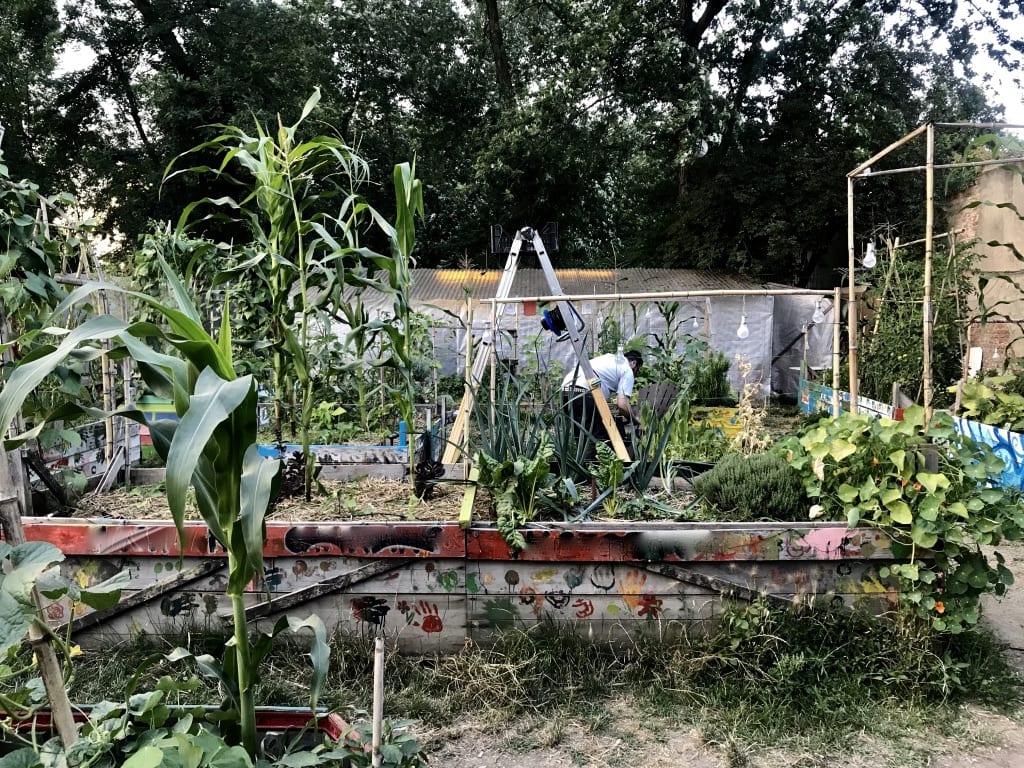What’s the Opposite of Facebook? Err…it’s (still) Facebook – by Daniel Miller and Shireen Walton
By Shireen Walton, on 28 June 2018
Authors: Daniel Miller and Shireen Walton

Facebook as digital allotment for growing community? Photo (CC BY) Shireen Walton
Once Facebook had become established, there developed a general consensus as to its primary social consequence: it allegedly led to rampant narcissistic individualism – people preening themselves in public, and to the decline of community and ‘proper’ sociality. The dominant motifs, much used in advertising at the time, would be of a woman posting herself painting her toenails a bright colour, or a teenager posing for a selfie. As such, Facebook was castigated by older people as something which encouraged this self-centred orientation by the young. Yet by the time the Why We Post project developed in 2012, the evidence was that the primary orientation of this social media was indeed social. The young posed with their arms around their Best Friend Forever and Facebook had become central to mother and toddler groups and the reintegration of families separated by migration and diaspora.
We work in very different field contexts; Danny within a comfortable small Irish town, and Shireen in an inner-city, multiethnic neighbourhood of Milan. Yet in both cases, the people we speak to say that the main reason they use Facebook is to keep up with the community; to share in another opportunity for being together (this time online), and to find out about events and gatherings taking place in the area. In the Irish case this might be a charity walk such as `Darkness into Light’, to raise money for the prevention of suicide, or the events associated with a weekend celebrating traditional music, or to facilitate community development in a new housing estate. In Milan, this could be to arrange and advertise a mass convening in public space one Saturday afternoon, standing side by side holding hands to form a 4km long catena umana (‘human chain’) – an act of celebrating the unity present in their community, and to contest the negative perception of the neighbourhood as a ghetto. Facebook, in both of these contexts, is the main site for local community news, community history, community photography and so forth. In the Irish site, this is especially important for local sports – of which there are a great many in this small town. For example one informant from Buan goes on Facebook several times a day. They look at two Buan sites concerned with swimming, two closed groups; one called Buan Talk and the other Buan buy/sell/swap, a Buan kayaking group, the fortnightly Buan News site, and the site of one of Buan’s cafes. In the Milan site, community Facebook group(s) are where the neighbourhood keeps together in a range of interesting ways, including where people express willingness to offer their time or a helping hand to one another. One informant in the Milan site found it remarkable, for instance, how if someone gets sick or needs help with something and posts this to the group, there will be an average of 20-30 responses each time from people willing to help them – from buying some basic groceries to picking up medicines, and so on.
Such community uses are not new, but they may have become increasingly important while more individualistic uses have declined., This may reflect the way in which Snapchat has become more important for young people, while WhatsApp has taken on the primary role of linking families together in everyday communication. By contrast, Facebook with its combination of visuals, texts, unfolding events in sequences, complemented by basic information such as contact details, is now ideal for advertising the latest play, or explaining to people how to get their T-shirts to support a charitable walk. Another factor, noted by Danny in 2012 is the way Facebook is gradually migrating from younger to older people in its usage. While there is a cross-generational feel to these community Facebook groups, the people that create, use, and invest time in them are increasingly in their 40s and upwards.
In both fieldsites, creating community includes establishing what is appropriate usage. For example, politics is largely avoided since it would be divisive. In the Milan site, this is especially important given the negative views other people have of this area – here, Facebook groups project an alternative, positive image of the neighbourhood. People using Facebook in these ways create a nurturing space for their community; a kind of digital green allotment space (echoing the importance of physical community allotments in both the Milan site and in Buan), where community togetherness offers some respite from the wider noise of Facebook, and the wider web at large, and where above all, the existing altruism we both find present in our fieldsites can plant itself/be planted, collectively self-nurture, and grow.
You will still find selfies on Facebook, and plenty of interaction within families, but in our two fieldsites, what is striking is the degree to which Facebook has taken on a role which is pretty much the exact opposite of its assumed consequence – which was the development of narcissistic individualism. Today, for many people in our fieldsites, Facebook is where the offline development of community spirit is enhanced by its cultivation within a digital online space.
One Response to “What’s the Opposite of Facebook? Err…it’s (still) Facebook – by Daniel Miller and Shireen Walton”
- 1
 Close
Close





[…] Visit original posting on ASSA blog here […]